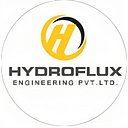MBR Based Plant
Cutting-Edge MBR Sewage Treatment Plants: Transforming Wastewater Management
In the ever-evolving landscape of wastewater treatment, the emergence of Membrane Bioreactor (MBR) based Sewage Treatment Plants (STP) has revolutionized the way we handle sewage and industrial effluents. Hydroflux Engineering Pvt Ltd, with over a decade of expertise, stands as a beacon of excellence in this domain. Let’s delve into the world of MBR-based STP systems and explore how they outshine conventional methods.
1 KLD to 10 KLD MBR-Based STP Plant
An MBR-based STP is a game-changer, especially for smaller facilities. It combines efficient sewage treatment with a compact footprint, eliminating the need for settling basins. This technology excels in microbial purification, effectively removing harmful bacteria and microorganisms. Unlike traditional systems, MBRs require less maintenance, which translates to cost savings.
An MBR-based STP comprises a submerged UF membrane filter and a biological medium, treating wastewater without additional chemicals. Its impact on water treatment facilities is unparalleled, enhancing water quality and reducing operational expenses.
10 KLD to 20 KLD MBR-Based STP Plant
Are you in need of a 10 KLD to 20 KLD MBR-based STP Plant? These plants are equipped to treat wastewater, remove pollutants, and produce high-quality output. Components include a bar screen, MBR media, secondary setting media, filter press, chlorination system, sludge recirculation/transfer pump, air blower, air diffuser, and filter feed pump.
In industrial sectors with significant wastewater generation, the MBR-based STP is a beacon of hope, offering efficient and cost-effective treatment.
20 KLD to 50 KLD MBR-Based STP Plant
The 20 KLD to 50 KLD MBR-Based Sewage Treatment Plant is a multifaceted system. It incorporates a bar screen, MBBR media, secondary setting media, a chlorination dosing system, a multi-grade sand filter, and a filter press. This sophisticated process entails three stages of filtration, focusing on the removal of biological contaminants, chemical treatment, membrane filtration, and the production of reclaimed water.
The result is water cleaner than conventional sewage, with a lower sludge retention time. It reduces the footprint of wastewater treatment, replacing sedimentation tanks, clarifiers, and media filters. The treated water is of superior quality and can be directly used or processed further.
50 KLD to 100 KLD MBR-Based STP Plant
For wastewater that is a combination of domestic and industrial waste, an MBR-Based STP Plant offers a robust solution. It employs biological digestion and advanced membrane filtration technology to eliminate pollutants. MBR technology can operate at higher MLSS concentrations, reducing the size of wastewater treatment plants.
The treated water is not just safe for consumption but can also be fed to reverse osmosis units for further refinement.
100 KLD to 500 KLD MBR-Based STP Plant
MBR-Based STP Plants, ranging from 100 KLD to 500 KLD, combine biological digestion with mechanical filtration to treat municipal wastewater. Specially designed submerged hollow fiber membranes with pore sizes of 0.1–0.4 microns effectively remove bacteria and pathogens. These systems are unique in operation and maintenance, offering substantial cost savings of up to 60% for companies.
Frequently Asked Questions (FAQ)
How does an MBR-based STP plant work?
MBRs efficiently remove pollutants by eliminating fouling layers on the membrane surface. The system can operate in two modes: intermittent permeation and continuous aeration. The former involves intermittent membrane cleaning, while the latter handles higher MLSS concentrations. Hydrodynamics, the RTD, and system design are crucial factors impacting MBR efficiency.
What’s the difference between SBR and MBR based STP?
MBR outshines SBR in terms of efficiency, cost-effectiveness, and handling high-volume wastewater. SBR is sensitive to changes in wastewater composition, which can degrade effluent quality. Upgrading to an MBR-based system can overcome these challenges.
What is the advantage of MBR based STP?
MBR-based STP systems excel in advanced treatment technology, offering high-quality reuse water economically. They require low maintenance, have a reduced energy footprint, and suit various applications.
What are the advantages and disadvantages of MBR based STP?
MBR has low operating costs but is prone to membrane fouling, which increases maintenance expenses. However, the quality of effluent is superior.
Is MBR activated sludge?
MBRs produce effective biosolids capable of filtering a wide range of pollutants. The process is similar to conventional activated sludge systems, but it is more efficient and offers benefits in terms of footprint and effluent quality.
How many MBR based STP types are there?
Various MBR-based STP types are available, with differences in aeration rates and membrane types. The choice of aeration rate plays a critical role in system design and performance.
What is the typical lifetime of an MBR unit in STP?
The typical lifespan of an MBR unit in STP is around 25 years. The longevity can vary depending on factors such as wastewater volume and maintenance.
Is MBR tertiary treatment in STP Plant?
MBR-based STP systems are often preferred for their long-term cost-effectiveness, but improper operation and maintenance can be problematic.
